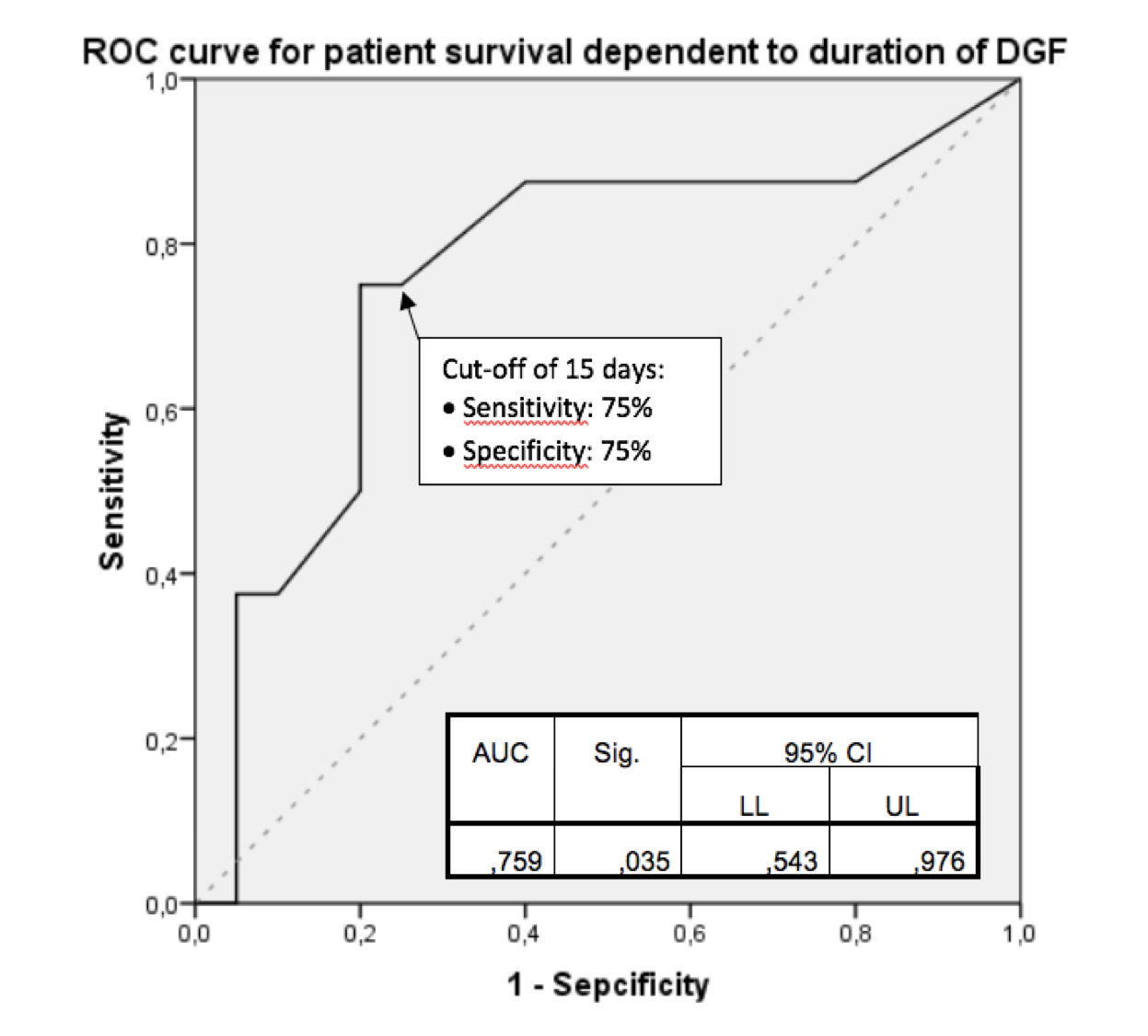Outcomes From Very Old Deceased Kidney Donors For Transplantation
1Renal Transplant Unit, Nephrology and Kidney Transplantation Department, Hospital Clinic, Barcelona, Spain, 2Organ Transplantation Coordination Department, Hospital Clinic, Barcelona, Spain, 3Renal Transplant Unit, Urology Department, Hospital Clinic, Barcelona, Spain
Meeting: 2019 American Transplant Congress
Abstract number: B155
Keywords: Age factors, Graft function, Graft survival
Session Information
Session Name: Poster Session B: Kidney Donor Selection / Management Issues
Session Type: Poster Session
Date: Sunday, June 2, 2019
Session Time: 6:00pm-7:00pm
 Presentation Time: 6:00pm-7:00pm
Presentation Time: 6:00pm-7:00pm
Location: Hall C & D
*Purpose: Age of deceased donors is increasing, so ensuring the viability of these organs is essential for renal transplantation to continue being the best option for renal replacement therapy. The aim of this study is to analyze graft survival from 75-year-old donors or older accepted for kidney transplantation.
*Methods: Unicentric longitudinal retrospective observational study including all deceased kidney donors from our center (January 2008-July 2018). Both donors after brain death (DBD) and donors after cardiocirculatory death (DCD) type III were included.
*Results: 121 donors (79.1 ± 3.0 years) were identified. 15% were DCD, 69% with history of hypertension and 11.2% presented history of diabetes. The score in the preimplant biopsy was 2.5 ± 1.1. The 56% of the grafts were preserved in perfusion machine, with IR values at 6 hours of 0.33 ± 0.47. Cold ischemia time was 17.99 ± 7.21 hours.
The recipients (63% males) were 70.5 ± 4.6 years old. They presented hypertension (90%), diabetes (27%) and ischemic cardiopathy (21%), with a median of 46 months on dialysis. 36.4% of them received induction therapy with thymoglobulin, and 50% immunosuppression with tacrolimus + mTOR-i + prednisone.
Graft survival at 1, 5 and 12 years was 78.4%, 63%, 45% respectively and, censoring the recipient mortality, it was 88.7%, 87.1%, and 87.1%, with eGFR at 12 months of 39.0 ± 16.0 ml/min/1.73m2. Graft primary-non function was presented on the 8.9%, and the main cause of graft loss was recipient death with a functioning graft (25%).
The incidence of delayed graft function (DGF) was 23.1% (23 ± 12 days). The duration of the DGF significantly discriminated the recipient risk of death in the ROC curve (AUC 0.759 95% CI 0.54-0.98, p = 0.035), with sensitivity and specificity of 75% at 15 days, and RR 5.75 for recipient death (95% CI 2.49-13.3, p = 0.000).
*Conclusions: Kidneys from 75-year-old donors or older are suitable for transplantation. We should be aware about the influential factors in the survival of the recipient, being DGF and infections the main determinants of it.
To cite this abstract in AMA style:
Guillen E, Ventura-Aguiar P, Ruiz A, Piñeiro G, Cucchiari D, Revuelta I, Torregrosa V, Cofan F, Sousa EDe, Esforzado N, Musquera M, Peri L, Oppenheimer F, Diekmann F. Outcomes From Very Old Deceased Kidney Donors For Transplantation [abstract]. Am J Transplant. 2019; 19 (suppl 3). https://atcmeetingabstracts.com/abstract/outcomes-from-very-old-deceased-kidney-donors-for-transplantation/. Accessed December 14, 2025.« Back to 2019 American Transplant Congress

